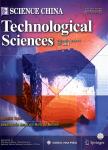Calibratio performance evaluation of the spaceborne hyperspectral CHRIS imager
Calibratio performance evaluation of the spaceborne hyperspectral CHRIS imager作者机构:State Key Laboratory of Remote Sensing Science Institute of Remote Sensing Applications of Chinese Academy of Sciences Beijing 100101 China State Key Laboratory of Remote Sensing Science Institute of Remote Sensing Applications of Chinese Academy of Sciences Beijing 100101 China State Key Laboratory of Remote Sensing Science Institute of Remote Sensing Applications of Chinese Academy of Sciences Beijing 100101 China State Key Laboratory of Remote Sensing Science Institute of Remote Sensing Applications of Chinese Academy of Sciences Beijing 100101 China
出 版 物:《Science China(Technological Sciences)》 (中国科学(技术科学英文版))
年 卷 期:2006年第49卷第z2期
页 面:88-96页
核心收录:
基 金:supported by the National Natural Science Foundation of China(Grant No:40271085) the National"973"Key Basic Research Development Program(Grant No:2002CB412506)
主 题:CHRIS, hyperspectral, calibration performance, image-based atmospheric correction.
摘 要:The CHRIS (Compact High Resolution Imaging Spectrometer) is a new imaging spectrometer, carried on board a new space platform called PROBA (Project for On Board Autonomy). The satellite was successfully launched in October 2001 by the European Space Agency (ESA). CHRIS operates over the visible/near infrared band (400-1050 nm). It has five work modes and can reach a maximum of 62 spectral bands. In this research, atmospheric correction based on hyperspectral images was performed on CHRIS images by using the popular radiance transfer code ACORN (Atmospheric Correction Now) and empirical algorithms. ACORN was also used to evaluate the calibration performance of CHRIS by the retrieved spectra of typical vegetation and soil. As a result,the maize reflectance spectrum corrected by ACORN could characterize vegetation reflectance in the range of 498-750 nm, but gave a fairly large deviation beyond 750 nm,showing the deficiency of spectral calibration beyond 750 nm. The ACORN-derived soil reflectance decreased beyond 800 nm, which was quite inconsistent with field-spectrummeasurement and showed that the calibration accuracy couldn t meet the requirements of ACORN for spectral and radiometric calibration within a certain spectral range. In addition,the stripes on the retrieved water-vapor content map indicated that the radiance-calibration performance of CHRIS is not perfect. As the first spaceborne hyperspectral imager of ESA, the calibration performance of CHRIS needs to be improved.



